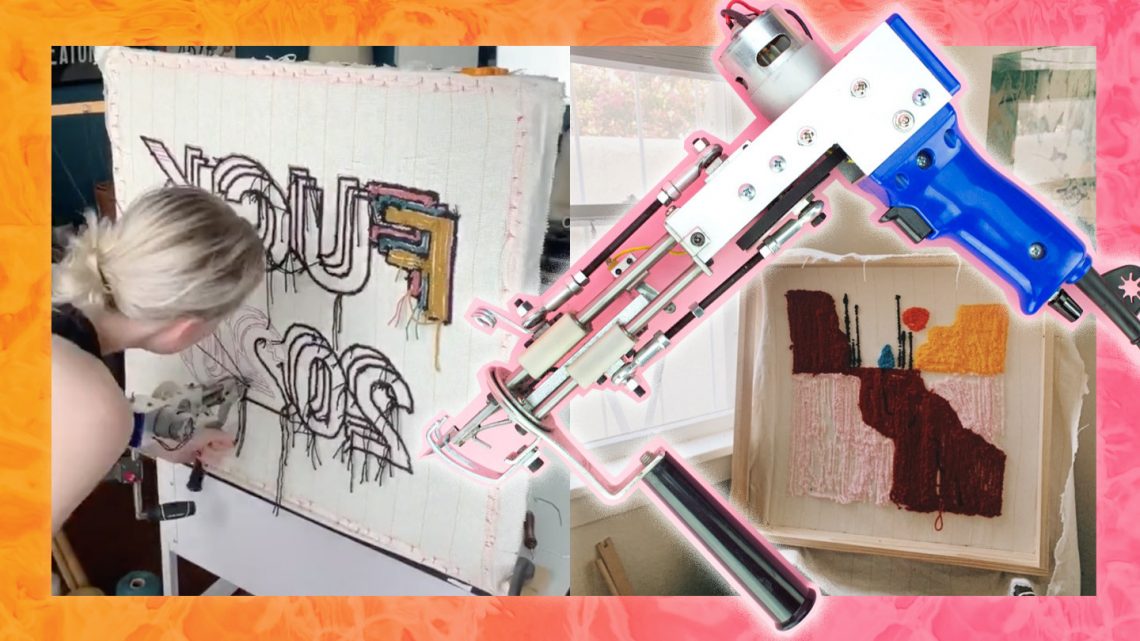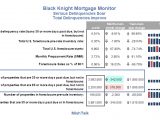
The Handmade Rug Scene is Booming, Thanks to TikTok
August 21, 2020If it seems like a lot of people have gotten into making rugs recently, it's because a lot of people have gotten into making rugs recently. There are many ways to make a rug, whether that's woven or hooked by hand, but it's the electric tufting gun sold by designer and artist Tim Eads that's entranced TikTok through speedy videos of yarn drawn across cloth. "My business itself has grown three times since March," Eads, who has run tuftinggun.com for two and a half years, recently told VICE.
Though Eads didn't invent the tufting gun—mechanized tufting machines date to the 1930s—he's been an integral figure in connecting it to the modern consumer market. Now, thanks to the satisfying niche of #rugtiktok and the pandemic-spurred need for hobbies, Eads is at the center of a rug making revival. Through TikTok, interest in rug making has risen over the past few months, both for full-time artists and for hobbyists. When it comes to sales, Eads said, "It's a direct correlation with COVID and everybody being locked down and trying to find crafts to do."
Samantha de Santos, who has been doing fiber arts for 10 years, had been saving for a tufting gun for two years. Eads's entry-level machines go for $275 and it hadn't been an urgent need, but she said, "When the pandemic started, I immediately bought it because I knew I was going to be quarantined." She'd made rugs using the simple punch needle process, but found it frustrating. What she likes about using a tufting gun—and what makes it so accessible—is the fact that you can "trace out whatever it is that you want to draw or make, and then you can just do it."
Though de Santos has shared art on Instagram for a few years, her following has picked up more rapidly on TikTok, where she's known as @agavefiber: In just one year, she's gathered eight times as many TikTok followers as she had on Instagram. Rug-making videos net more views than her other art, she said, and the responses are also more positive. "As soon as you see that on your algorithm, you're like, 'wait, what is that?' if you don't know what it is," she said.
As with most craft videos, watching someone make a rug by any method is satisfying; you see something go from blank and empty to colorful and complete. As Eads mentioned, it's fast and the motion is repetitive, and the tufting gun adds interest if people haven't seen the power tool-like device before. On TikTok, the satisfaction of that whole process takes just one minute, and collectively, the hashtags #rugtiktok, #rugmaking, and #tufttheworld (the latter is named for Eads's online tufting community) currently account for 17.7 million total views.
Some members of #rugtiktok are new to the art world. Anfernee Abad, a computer science student who shares his work as @pennyiech, started making rugs in July. At the time, he didn't realize the social media rug scene was growing; he just wanted to make an anniversary gift for his girlfriend. Using a punch needle and learning through a video, Abad made her a Hello Kitty rug, which she posted in a video to TikTok to over 230,000 likes.
Since then, Abad has made seven or eight rugs as commissions and has gotten a tufting gun for larger pieces. A handmade rug takes him eight to 12 hours, Abad estimated, though he finds the tedious process relaxing. (The machine lets him work much faster.) Abad plans to continue his rugs when the semester starts. "This side of creativeness keeps me sane with the stuff that I'm doing for school, so that is something I'm definitely gonna hold onto," he said.
The increased visibility of handmade rugs poses new opportunities for creators. Perhaps no piece of art on #rugtiktok better captures the current moment than Miffy Hornsby's "Fuck 2020" tapestry, a timelapse video which has gained at least 2 million views as of this writing. Hornsby, who studied interior design but got into textile art while working as a project manager for an art curator, has posted rug-making videos on TikTok since May at the prompting of friends who'd seen similar clips. Because of her viral success, she's been "non-stop busy." Selling the "Fuck 2020" design and taking on custom work have allowed her to move into a larger art studio. "I can't think of another platform that would have given me this opportunity," Hornsby said.
Basia Kurlender is a graphic designer who started making rugs because she found that the rugs she could buy for her home were expensive. A full-time freelancer, Kurlender has seen gigs dry up recently. When she posted her rugs on Instagram and got inquiries about buying them, she realized selling them could be the next step.
After starting out with a vintage tufting tool that she got for $25 on eBay, Kurlender recently also got a tufting gun—in part because its efficiency will help her sell her work for accessible rates. Working with the manual machine, "I'd have to charge a ton of money for really small pieces because of the time it takes," she said. "I don't think that's really the type of clientele I'm going towards."
Fiber art's image may now be changing. De Santos said that TikTok has connected her to Gen Z in a way Instagram never did. Perhaps through that generational melding, the TikTok rug scene has emerged as visibly young: creators make rugs inspired by Frank Ocean, like Abad; or that reference Travis Scott and Tyler, the Creator, like popular new rug maker @euphoricsupply; or which resemble black metal logo designs that are then sewn onto hoodies, like @enoch.cool. "I think a lot of people felt like it was an older hobby," she said, though now, people are realizing fiber art's potential as "new, contemporary, and exciting."
The recent movement has also broken free of historical stereotypes that tufting, embroidery, and needlepoint are exclusively done by women. "I think it's also helping us transition away from being what has really been relegated as a woman's hobby—you know, fiber arts—to something that is [seen as] art," de Santos said. Kurlender, meanwhile, noted that while the TikTok rug tufting scene is broadening the idea of who's creating fiber art, that could result in the "unintentional erasure of the long history of craft and fiber arts as 'womens' work.'"
She pointed to @euphoricsupply in particular, whose fast rise in the niche has enabled him to launch a web store that also sells a rug making gun. "It was never like a masculine thing to do, but he is getting so much positive attention from it," Kurlender said. "It's just interesting. I think it has democratized, and degendered rugs, maybe because it's a power tool."
Eads has, for the most part, been able to meet the new demand for his products, though he's experienced delays recently due to shipping backlogs. Nevertheless, he's enjoying his role in the growing scene. "It's so much fun and it's really amazing to be a part of it," he said.
It's hard to tell whether it was TikTok, the pandemic, or an inseparable combination of the two that catalyzed the rug boom. "I think if there wasn't a pandemic, TikTok would have still contributed to an increase in it, just because of the way TikTok is," de Santos said. "I think that the pandemic has allowed people to have the time to actually act on that interest, versus just being interested in it, if that makes sense."
Follow Bettina Makalintal on Twitter.


